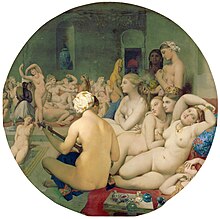
Mexican Museum Takes Down Offensive Artwork Depicting Sex Workers

### The MUAC Controversy: Art, Responsibility, and Community Backlash
In recent events, the Museo Universitario Arte Contemporáneo (MUAC) in Mexico City faced significant backlash surrounding an exhibition by Argentine artist Ana Gallardo. The controversy stems from works that included derogatory statements about elderly former sex workers, leading to public protests and an eventual removal of key artworks from the show.
Gallardo’s solo exhibition, *Tembló acá un delirio*, opened on August 10, 2024, but quickly sparked outrage among activists, advocates for sex workers, and the broader art community. The offensive artwork in question was Gallardo’s “Extracto para un fracasado proyecto (2011–2024)” (“Extract for a Failed Project 2011-2024”), which included insensitive and derogatory language about the sex worker community—and in particular, a resident of Casa Xochiquetzal, a Mexico City-based shelter for unhoused former sex workers.
### The Offending Artwork
The artwork featured a monumental text carved into a wall at the museum. Written from Gallardo’s personal perspective, it narrates her purported experience collaborating with residents of Casa Xochiquetzal. Specifically, Gallardo described one older sex worker, named Estela, in derogatory terms, such as “old sick whore,” a phrase that incited immediate disapproval from advocates.
Casa Xochiquetzal, founded in 2006, serves as a shelter for older women who are former sex workers, offering residents essential services like medical care, mental health support, food, shelter, and dignity at the end of their lives. The organization, which Gallardo drew from as material for her work, expressed strong disapproval of her portrayal, stating that Gallardo’s depiction was not only inaccurate but demeaning.
In a letter to MUAC, Casa Xochiquetzal sharply criticized the artist for misrepresenting their community and for using offensive language. One particular grievance noted was Gallardo’s alleged non-consensual photographing of Estela. Furthermore, the organization expressed concern over Gallardo’s portrayal of the shelter and its community, accusing her of “re-victimizing, insulting, lying, recording without consent, and displaying residents” under the guise of art.
### Protests and Museum’s Response
In response to the controversy, various activist groups, including *Alianza Mexicana de Trabajadorxs Sexuales* (AMETS) and *LLECA-Escuchando la calle*, protested outside MUAC. Their demonstration highlighted issues of disrespect, pointing out how Gallardo’s work perpetuated harmful stereotypes and stigmatization of sex workers. Graffiti on MUAC’s facade labeled the museum as “whorephobic,” a term that signifies prejudice and discrimination against sex workers. Protestors also criticized Gallardo’s work as an example of “extractivist” cultural practices, where marginalized communities are exploited for the sake of art—without receiving fair representation or consent.
Initially, MUAC’s curators responded by limiting access to Gallardo’s work to conduct a review. However, as protests grew louder, the museum took more definitive action. On October 15, 2024, MUAC announced the complete removal of “Extracto para un fracasado proyecto” as well as another artwork, “Sin título, 2011,” both works being central to the controversy.
### Failed Artist Intentions and MUAC’s Apology
Gallardo’s exhibition was meant to explore themes of aging, marginalization, and societal failures. According to her and MUAC’s initial statement, the problematic text aimed to communicate the artist’s personal frustration with her inability to fully engage with the sex worker community. However, such intentions were lost amidst the hurt and anger generated by the offensive language used. Gallardo, being an outsider to these communities, was seen as imposing harmful narratives rather than amplifying marginalized voices.
MUAC acknowledged its failure in recognizing the harmful impact that Gallardo’s work could have on viewers, particularly those who directly relate to the subjects of her work. In an official apology, the museum stated, “The fact that the works caused offense is contrary to the purpose of the curatorial project… We did not consider the pieces would offend the community of sex workers and their supporters.” They assured the public that the museum’s aim is not to support “artistic extractivism” that exploits marginalized communities.
The Universidad Nacional Autónoma de México (UNAM), which oversees MUAC, also issued a statement emphasizing their stance against all forms of violence and bias, particularly against women and vulnerable populations.
### A Broader Conversation: Whorephobia and the Role of Art
This controversy has ignited conversations about how art institutions approach topics involving marginalized groups. The accusation of “whorephobia” has added to this discourse, with activists pointing to the ongoing stigma, discrimination, and societal neglect directed toward sex workers. The derogatory